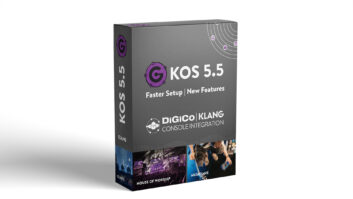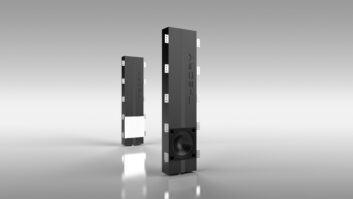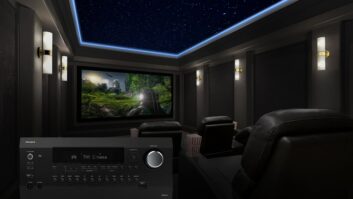NEW YORK — In the nine months following the launch of the iPhone 5, the car electronics aftermarket has made mixed progress in offering multimedia and navigation head units with touchscreens that display and control the content of multiple types of apps running on a cable-connected iPhone 5.
Compatible apps include navigation, traffic, social media and Internet radio, among others. The head units’ touchscreens also control in-dash playback of iPhone-stored music and video and Internet radio apps. Pioneer and Clarion models add control and display of iPhone calendar items and contact lists, which can be used for hands-free Bluetooth calling.
JVC, Pioneer and Clarion offer head units whose touchscreens control select apps on the iPhone 4 and 4S as well as the phones’ A/V functions. For its part, Alpine offers heads that display iPhone-stored video and app video via a feature called iPod Video Control, which does not enable the head unit to select iPod/iPhone video but does enable head-unit display of the video.
To date, Pioneer has made the most progress in updating its units with firmware updates and cable adapters to extend compatibility to the iPhone 5.
“We’re still the only manufacturer with an iPhone 5 solution for the control and display of apps and iPhone 5 digital video,” said Ted Cardenas, marketing VP for Pioneer’s car electronics division.
In contrast, Clarion told TWICE that it “is still working to perfect compatibility with the iPhone 5, and we are not ready to make an announcement at this time.” Clarion this year launched two double-DIN head units with Smart Access technology to control iPhone 4/4S apps: the $999-suggested NX603 A/V-navigation head and the $599-suggested mechless FX503 head unit, both with 6.2-inch touchscreens.
For its part, JVC said it hasn’t been able to develop iPhone 5 solutions for its four 2013 multimedia head units with App Link Mode with Extended Control. Their touchscreens control all functions of five compatible iPhone 4/4S apps except for app launching.
“The units were released in February, and it would not be possible to implement an HDMI or RGB port at this time in the current lineup [to convert iPhone 5 digital video to HDMI or RGB],” said national product supervisor Jacob Hardin. Nonetheless, he said, “we still support AppLink on iPhone 4 and 4S models plus music playback and Pandora compatibility on iPhone 5.” In addition, he said, “users can use External mode to listen to audio from most apps on iPhone 5 as well.”
One supplier pointed to the potential to build a digitalvideo- to-composite-video adapter for use with a head unit’s composite-video inputs, but the supplier noted that an accessory company that showed such as adapter at January’s International CES has not yet shipped the product, perhaps because of Apple’s stringent certification process.
For its part, Alpine offers five 2013 touchscreen head units with iPod Video Control to display iPhone 4 and 4S video, but the heads lack HDMI and RGB inputs for use with potential digital-video adapters, and the company said it has no plans to offer an adapter that would convert the iPhone 5’s digital video into an analog composite signal that the heads can accept.
“Theoretically this is possible using multiple adapters, but it is not recommended since the video quality cannot be guaranteed,” an Alpine spokesperson said.
Pioneer, on the other hand, has turned to HDMI and RGB adapters and to firmware upgrades to enable headunit control and display of a wide variety of iPhone 5 apps.
Beginning in January, the company rolled out firmware updates and cable-adapter solutions for 13 2012 and 2013 head units incorporating its AppRadio app-control platform. The company also plans July shipments of two more models incorporating the AppRadio platform. They are the $499-suggested SPH-DA210 multimedia DVD receiver and $399 SPH-DA110 mechless receivers. Both feature the company’s new AppRadio3 platform, which incorporates iPhone 5 compatibility, continued support for touchscreen display and control of select Android apps, and 7-inch touchscreens. They’re also the brand’s first heads with MirrorLink connectivity to select Android phones.
To keep the momentum going, Pioneer plans firmware and cable-adapter solutions for two 2012 navigation systems, and the upgrades will likely available in the summer, said Cardenas.
Two 2013-series AppRadio-equipped DVD-receivers in Pioneer’s line can’t be upgraded to control iPhone 5 apps, Cardenas noted.
Compatibility issues arose with the iPhone 5 because Apple incorporated a new 8-pin Lightning connector, which spits out digital video, whereas the iPhone 4 and 4S used 30-pin connectors that spit out analog composite video to transfer video, menu images, and album art to head units. Those head units, however, were not configured to accept digital video from the iPhone 5.
To get around this incompatibility with the company’s AppRadio-platform head units, Pioneer made use of backpanel HDMI connections on select head units. Consumers buy Apple’s $49 Lightning-to-digital A/V adapter cable, plug one end into the iPhone, and plug the other end of the cable into two other cables. One of those two cables is an HDMI cable included in Pioneer’s $50 connectivity kit, which connects the digital A/V adapter cable to the head units’ back-panel HDMI input. The second cable is the iPhone 5-supplied Lightning-to-USB cable, which connects the A/V adapter cable to a USB cable supplied with the $50 kit. The USB cable in turn plugs into the head units’ back-panel USB to charge the iPhone 5.
For Pioneer head units with RGB inputs otherwise used for the company’s outboard navigation modules, Pioneer offers this solution: Consumers buy Apple’s $49 Lightningto- VGA adapter cable, plug one end into the iPhone 5, and plug the other end of the cable into two other cables. One of those two cables is the iPhone 5’s Lightning-to-USB cable to charge the iPhone 5. The other cable is a Pioneer VGA cable that plugs into the Lightning-to-VGA cable on one end and, on the other end, is attached to one of two $100-everyday Pioneer junction boxes. Each junction box is designed for specific head units. The junction boxes convert VGA to an RGB signal that can be displayed on the Pioneer heads. The junction boxes in turn plug into the back of the head via an attached RGB cable.
All Pioneer solutions use a Bluetooth data connection to send control signals from the head units’ touchscreens to the iPhone 5.
Because Pioneer rolled out its solutions relatively soon after the iPhone 5 launched, and because it kept consumers and dealers informed of its timetable, Pioneer did not get much negative feedback from consumers who wanted to upgrade to the iPhone 5, Cardenas contended. He also noted that, after the iPhone 5 launch, many consumers continued to buy iPhone 4 and 4S models because of their lower pricing and were able to connect them to Pioneer’s heads without waiting for the company’s solutions.
Cardenas also said that even without the iPhone 5 solutions, the company’s AppRadioplatform heads controlled iPhone 5 music playback and playback of select Internet radio apps via standard Lightning-to-USB cable.
Like select Pioneer heads, Clarion’s Smart Access heads have HDMI inputs, so Clarion might be able to develop a similar solution. SmartAccess heads control compatible thirdparty and Clarion-provided apps running not just on iPhones but also on Android phones.













